Modern containers now sport a wide range of features, and many have different names between manufacturers, multiple variations, and often little known benefits and drawbacks. Here, we hope to go some way to help you understand these features and which ones may be best for your new purchase; however, the information given here does not replace proper advice from a rigger, dealer, or instructor.
Index
This guide is long and contains detail about many features. We have provided the index below to help you skip straight to the features you are interested in reading about.
Articulation (Hip Rings & Chest Rings)
RSL (Reserve Static Line) & MARD (Main Assisted Reserve Deployment) Systems
Laterals (Standard, Cut-In, Floating)
Articulation
Metallic rings at the hips and chest that allow more flexibility in the harness and may make repairs and changes easier.
Photo |
Option |
Advantages |
Disadvantages |
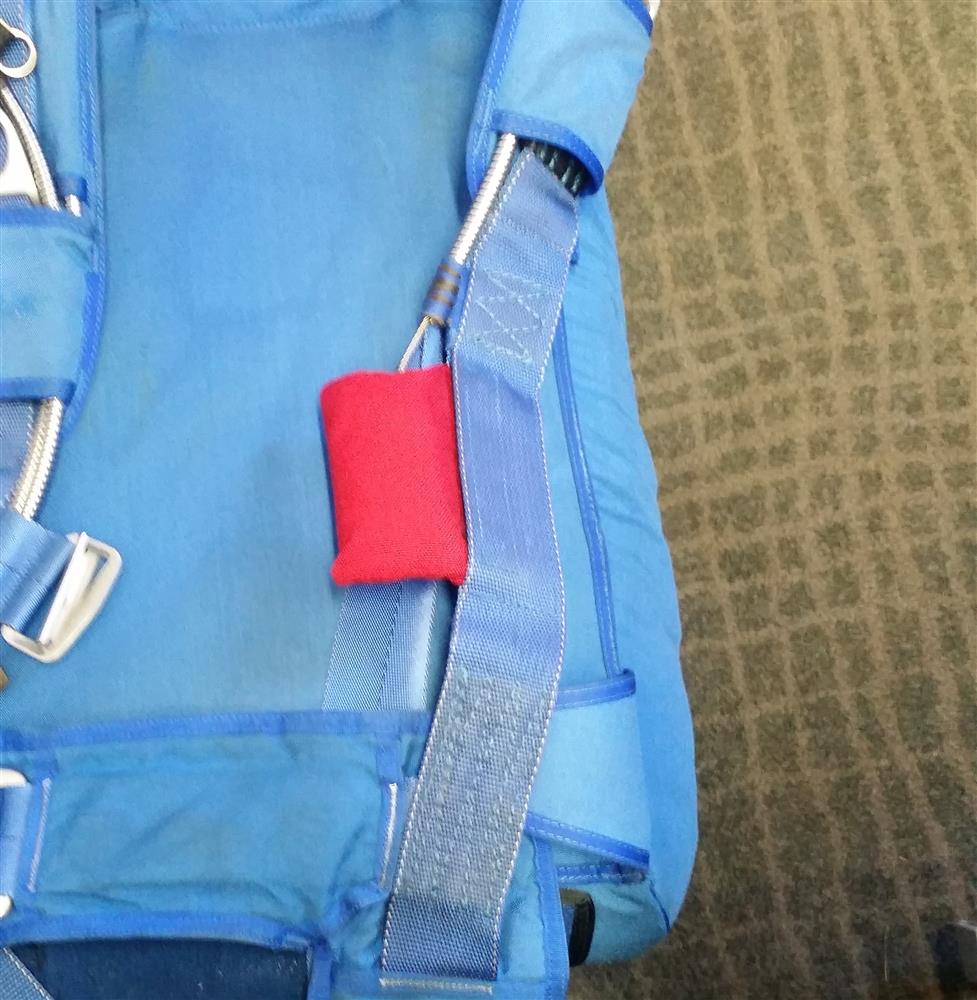 |
No Articulation ("Standard Harness") |
Simpler to build - often cheaper |
Less flexibility in the harness (which can also be an advantage!) |
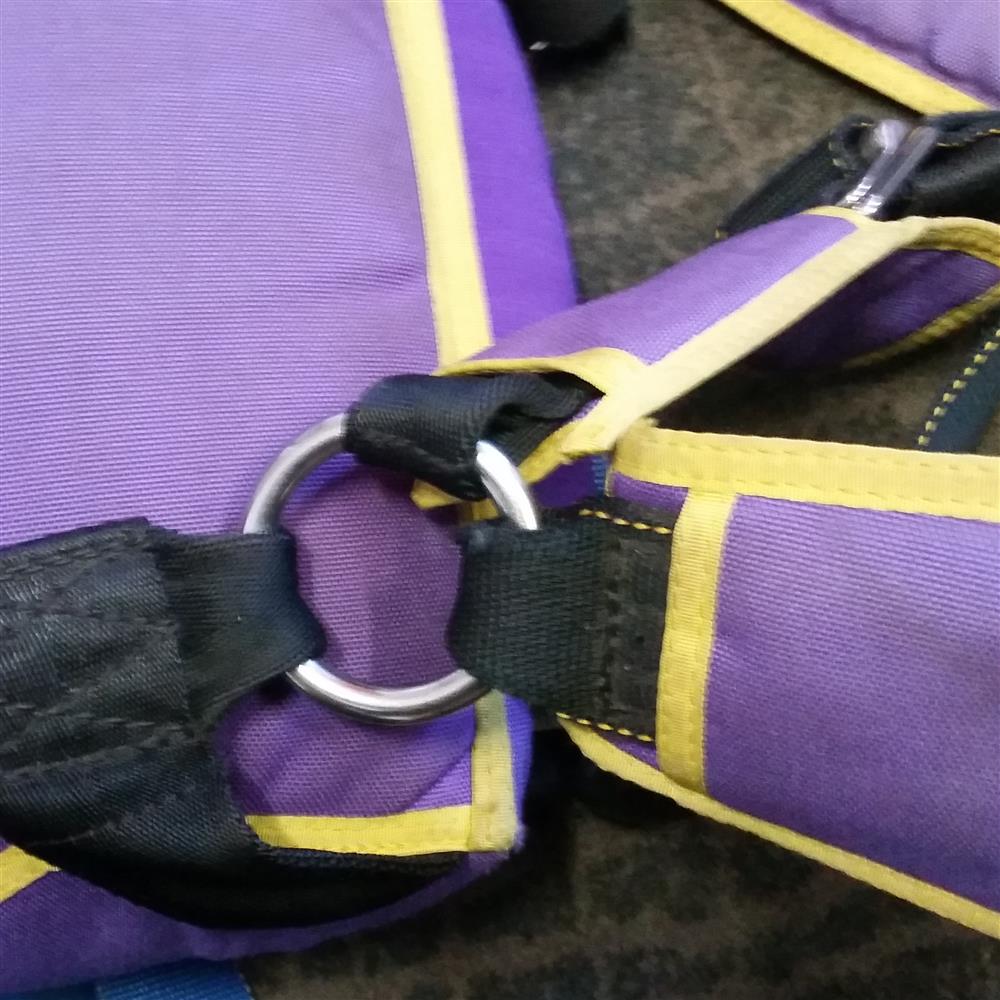 |
Hip Rings |
Easier change in angle between main lift web and leg straps Easier to repair or replace leg straps |
None |
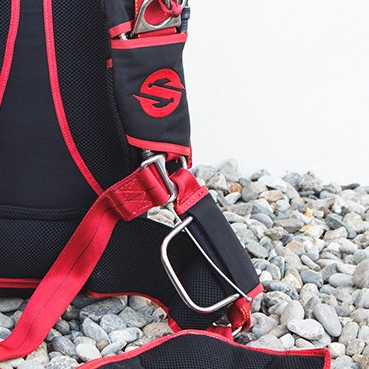 |
Full Articulation |
More flexibility in the harness Easier repairs to main lift web |
More flexibility in the harness (sometimes avoided by freeflyers) Harness turns under canopy may be less effective |
RSL / MARD
Debates around the use of RSL (Reserve Static Line) and MARD (Main Assisted Reserve Deployment) systems in different scenarios have been going on for many years. Separating Fact From Fiction on Parachutist Online has an excellent history and statistics around their use which is great reading for anyone looking to make an objective decision on the best choice for them.
An RSL will activate the reserve deployment during the release of a main and will usually result in a faster reserve activation and, thus, less altitude loss. The BPA mandates the use of an RSL system for student and A Licence skydivers.
You should seek advice from your instructor or appropriate coach if you are considering any new discipline, specifically:
- Canopy Formation
- Wingsuiting
- Camera Flying
- Canopy Piloting
Photo |
Option |
Advantages |
Disadvantages |
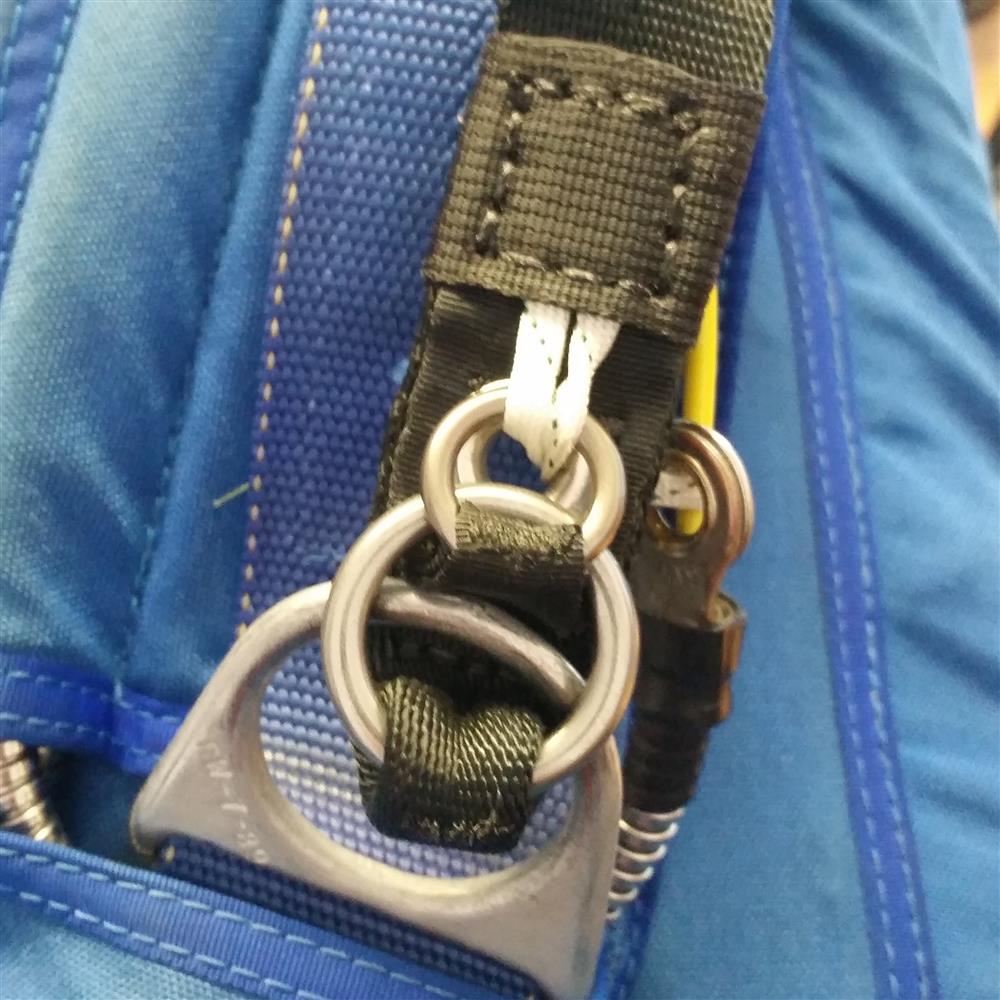 |
No RSL |
Cost |
Requires manual activation of the reserve after a cutaway BPA A Licence jumpers and students are required to jump with an RSL |
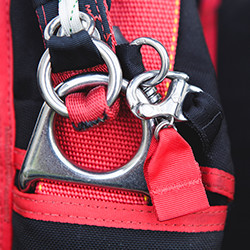 |
Standard RSL |
Backup device for deploying the reserve in a cutaway Will usually deploy the reserve quicker than activation with the reserve handle Required for A licence jumpers and students under the BPA Can usually be disconnected for jumps when not desired |
May reduce separation achieved after a cutaway from a canopy collission There is an argument that an immediate deployment of the reserve after cutting away a spinning malfunction may increase the possibility of twists on the reserve. (This argument is usually contered by the argument that the extra altitude would provide additional time to deal with them.) |
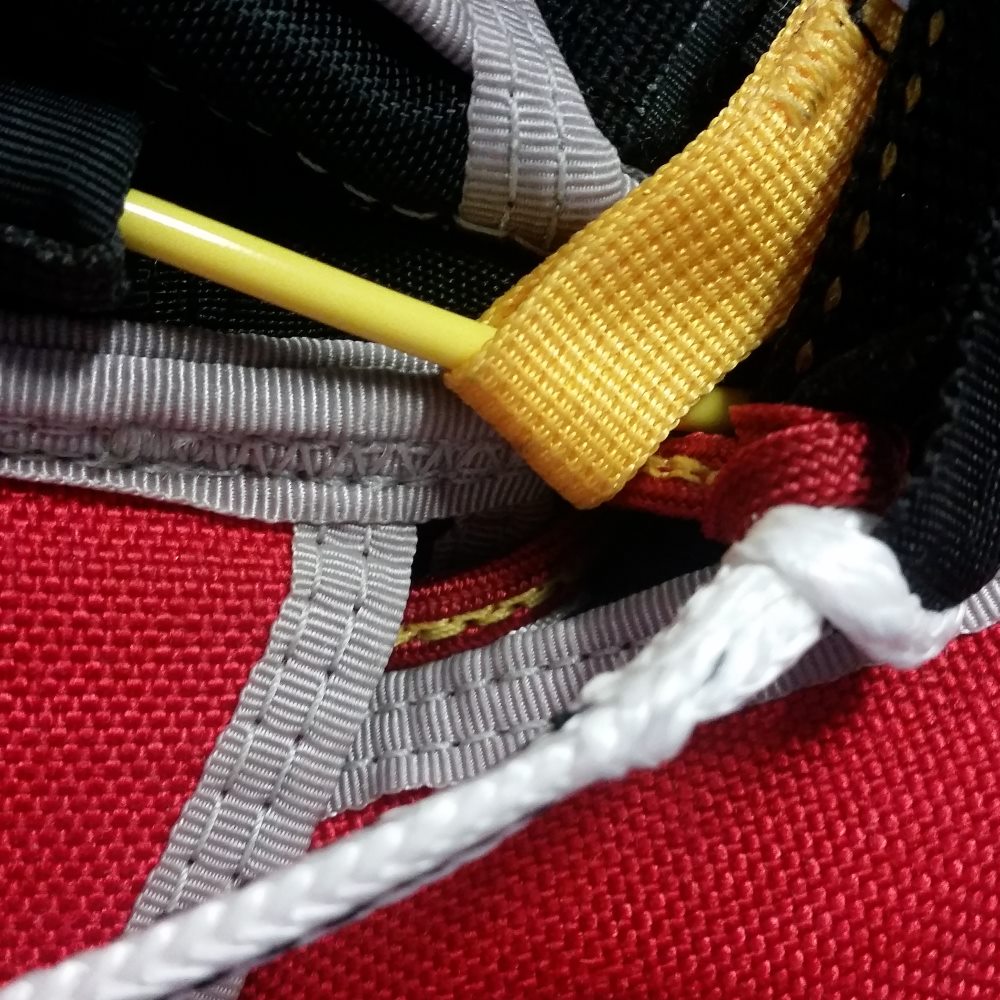 |
Collins Lanyard |
Reduces the chance of an RSL (or MARD) activation when the non-RSL riser is still attached by cutting away that riser if not already released |
None |
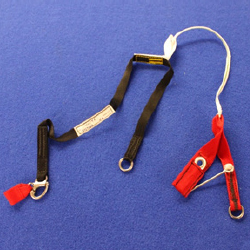 |
MARD |
Faster deployment of the reserve during an RSL activation |
Cost Most systems must release in the event of a direct deployment of the reserve (no main out). The Mirage Trap is the exception, as it's not connected unless activated. |
Whereas an RSL will use the departing main to pull the reserve pin and initiate a normal reserve deployment, a MARD (Main Assisted Reserve Deployment) system allows the departing main canopy to pull out the reserve canopy (like a huge pilot chute), generally resulting in a faster reserve deployment.
There are several different systems available on different containers as listed below:
MARD System |
Designer |
Containers |
|
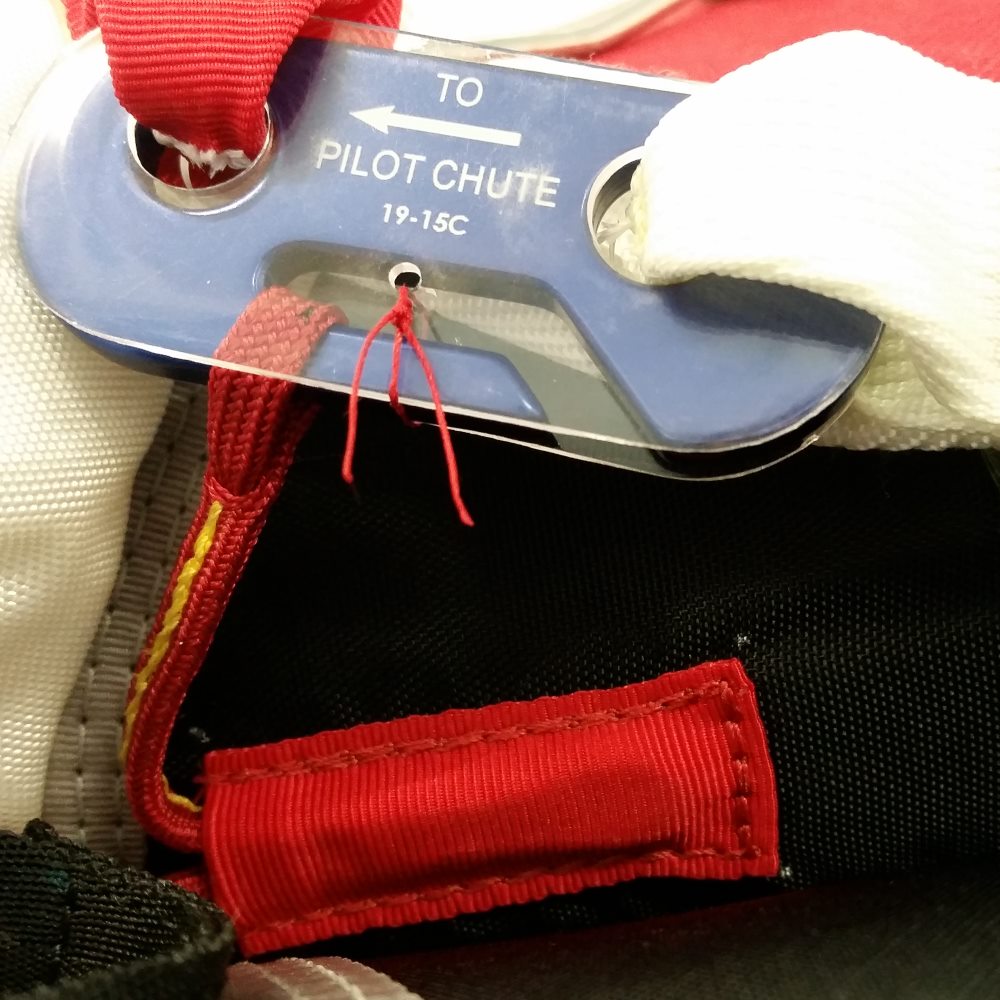 |
Skyhook |
UPT |
Vector, Javelin, Vortex, Icon Pro |
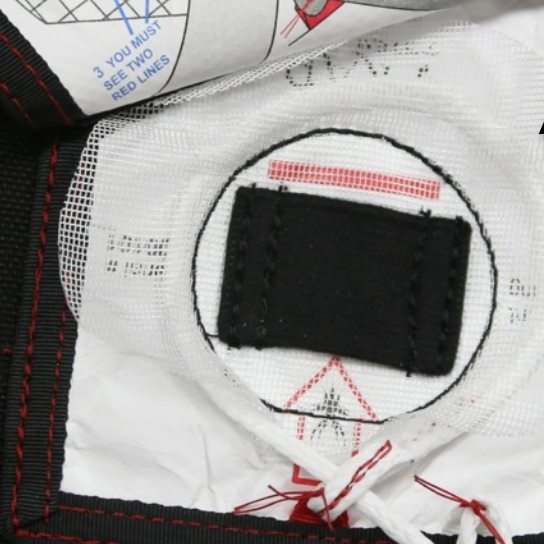 |
Trap |
Mirage |
Mirage |
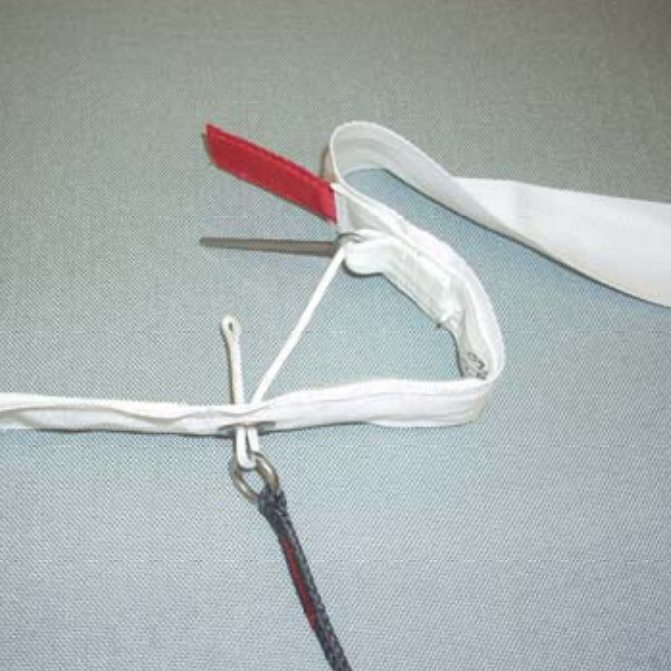 |
Boost |
Sunrise Manufacturing |
Wings |
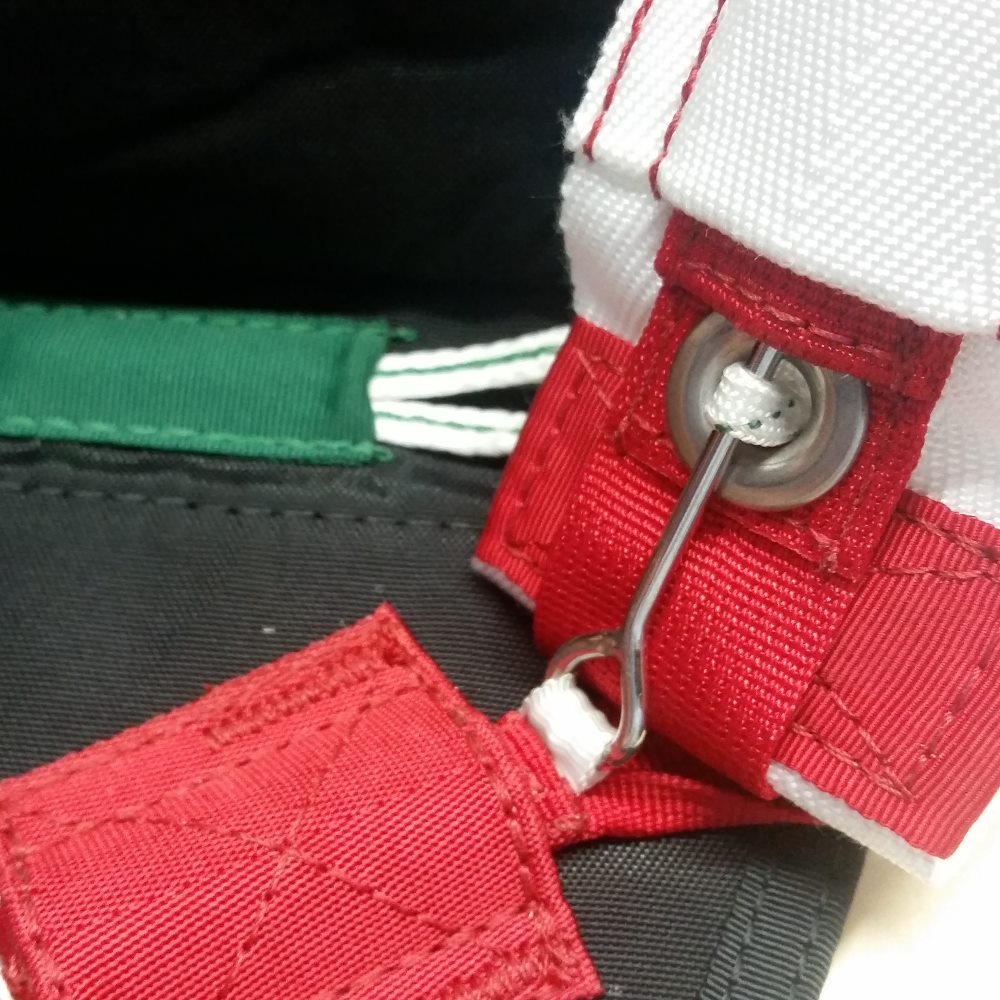 |
RAX |
Jerry Baumchen |
Sife, Fire |
Other Terms
Stevens Lanyard: One of the original RSL designs comprised of a lanyard from the riser to the reserve handle. Still in use today on the Teardrop container.
Shackle: A metalic part on the lanyard to connect one end of the RSL system to the riser, with a tab that allows easy connecting and disconnecting.
DRD: Direct Reserve Deployment. Synonymous with MARD and used by SWS Fire to market their system.
Padding / Spacer Foam
Soft padding material on the back pad, shoulders, or leg straps that improves comfort.
Photo |
Option |
Advantages |
Disadvantages |
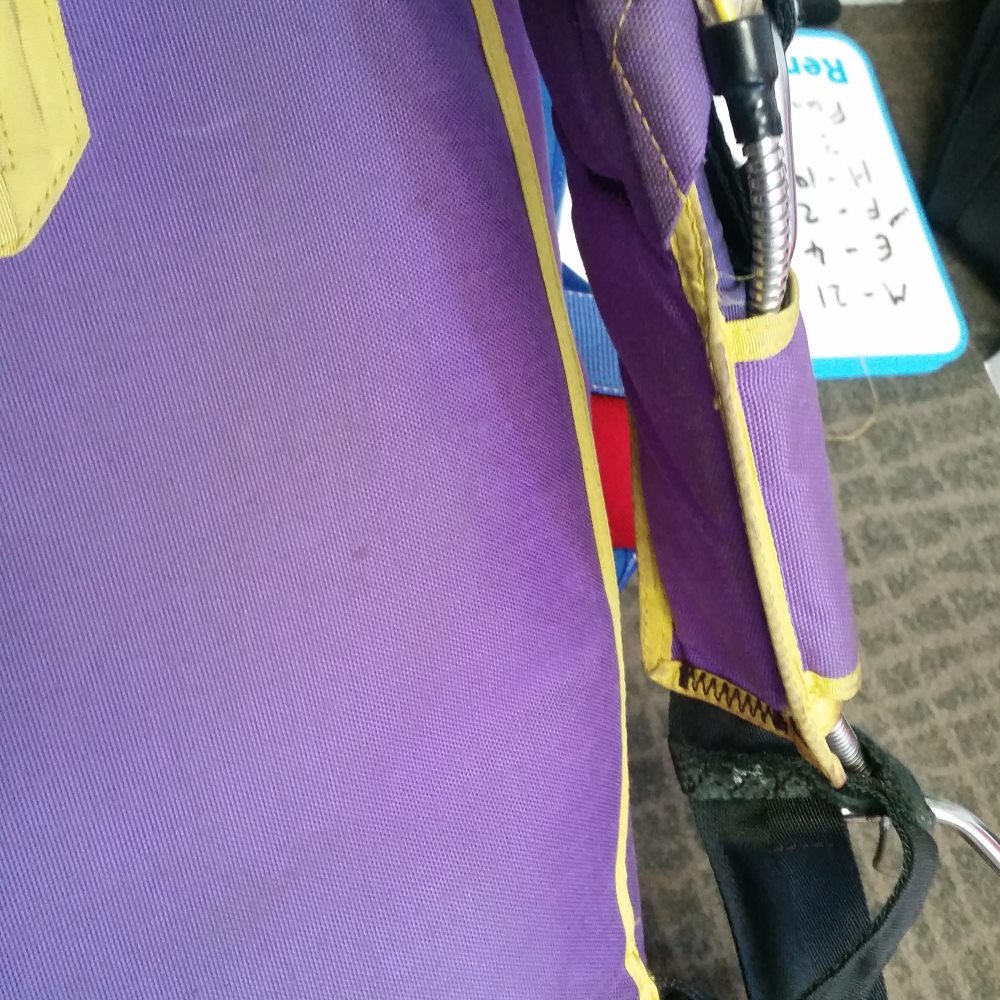 |
No padding |
Cost Harder wearing Dries quicker after washing or water landings |
Less comfort |
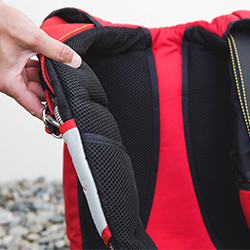 |
Spacer foam |
Comfort |
Cost May take longer to dry if wet (e.g. water jumps, pond swooping, or washing the container) May wear more quickly |
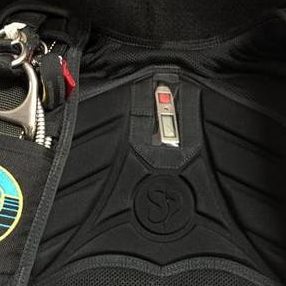 |
Other padding (e.g. Sunpath backpad) |
Comfort (see individual container literature) |
Cost |
Cut-in / Floating Laterals
The webbing at the bottom of the harness that sits around your hips can attach to the container at the sides (standard) or closer to the centre of the backpad (cut-in). Cut-in laterals help to keep the rig sitting against your back, which is important in disciplines such as freeflying.
Photo |
Option |
Advantages |
Disadvantages |
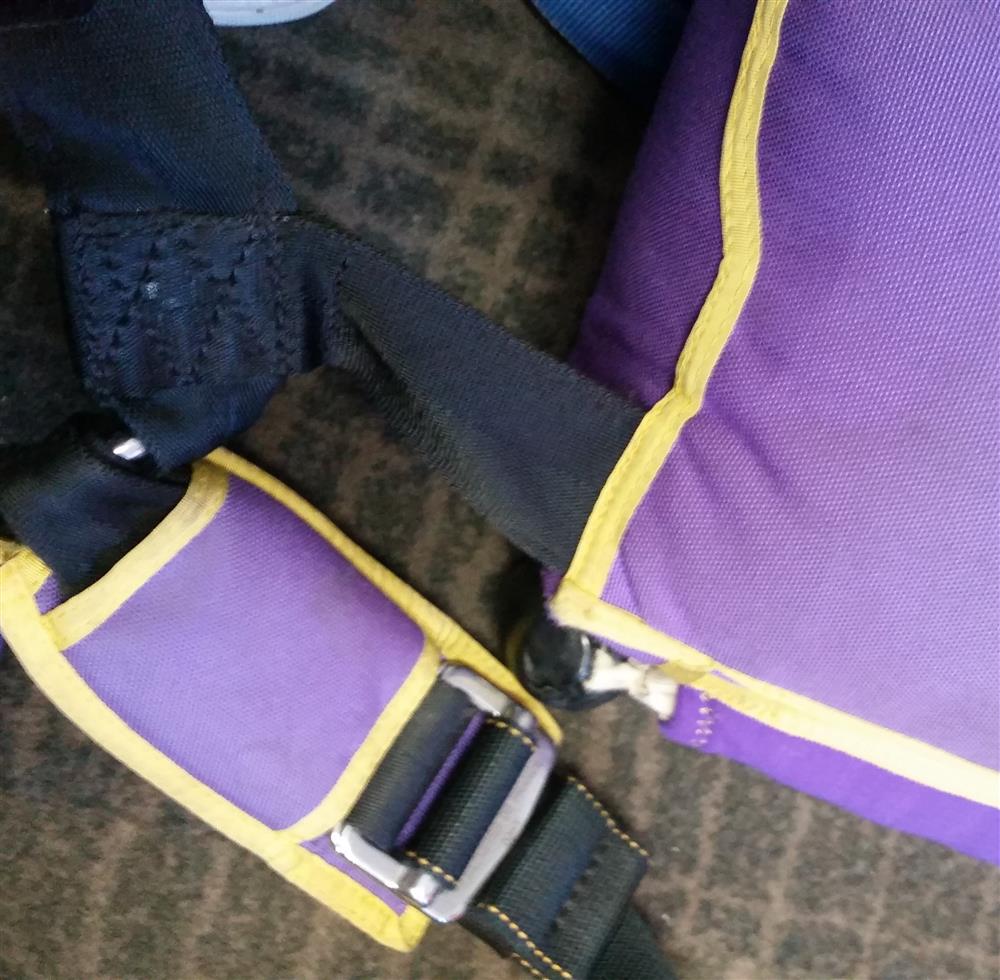 |
Standard harness (not cut-in) |
Cost Likely to fit a wider range of wearers |
May allow unwanted movement on containers wider than the wearer's back |
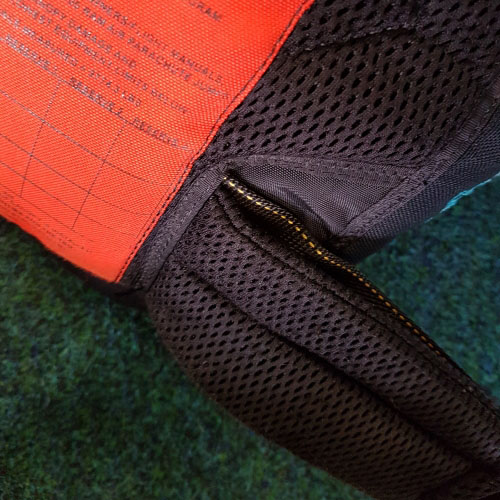 |
Cut in laterals |
Stays closer to the back / hugs the waist. Particularly useful when the container is wider than the wearer's back. |
Reduces the performance of harness turns under canopy |
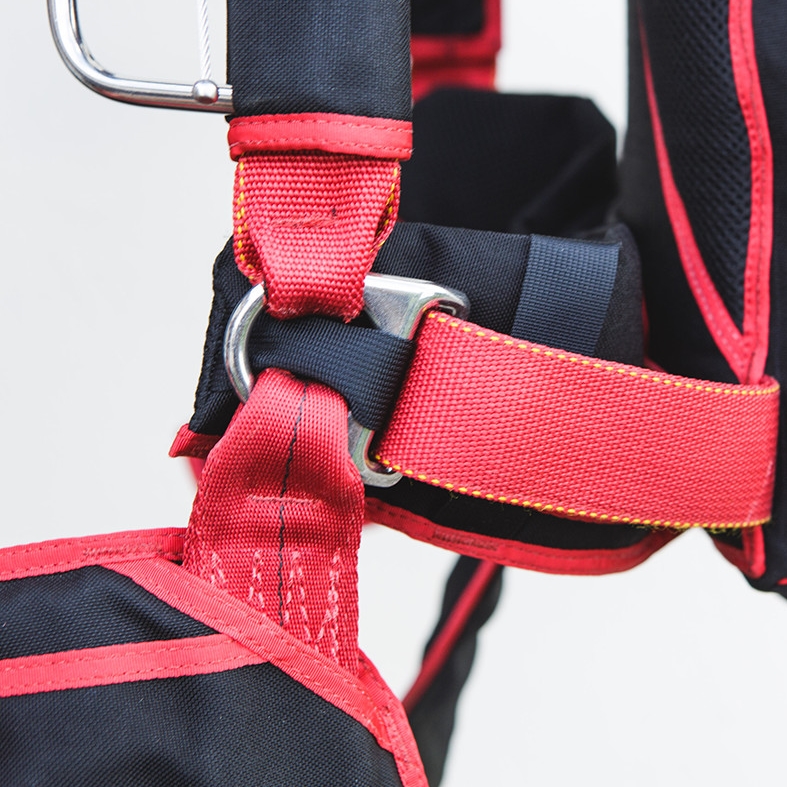 |
Floating laterals |
Balance between cut in and non cut in. Fits a reasonable range of wearers. Stays closer to the back / hugs the waist. |
Cost |
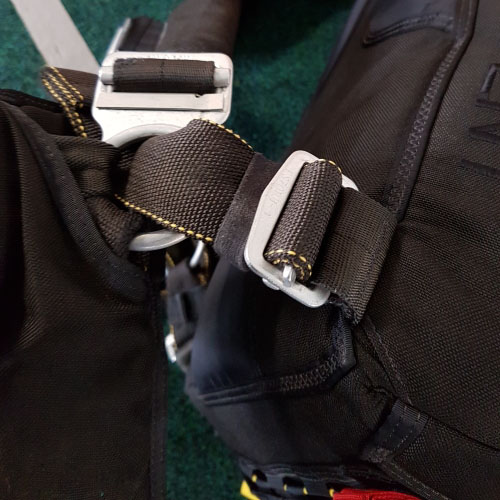 |
Adjustable laterals |
Buckles allow the laterals to be lengthened or shortened to fit the widest range of wearers |
Cost Must be adjusted properly |
Cutaway and Reserve Handles
Various options for your emergency procedure handles provide varying pros and cons, usually revolving around balancing the ease of use against the likelihood of unwanted activation. Always consult an instructor before changing to different handles as they may require alteration or revision of your reserve procedures.
Photo |
Option |
Advantages |
Disadvantages |
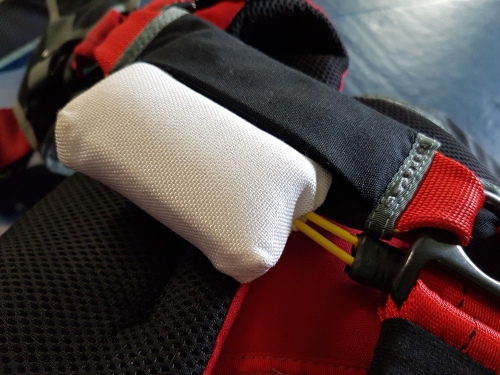 |
Soft pad cutaway handle |
Standard on most student and sport kit Velcro to secure |
Requires peeling from velcro Requires grip to pull |
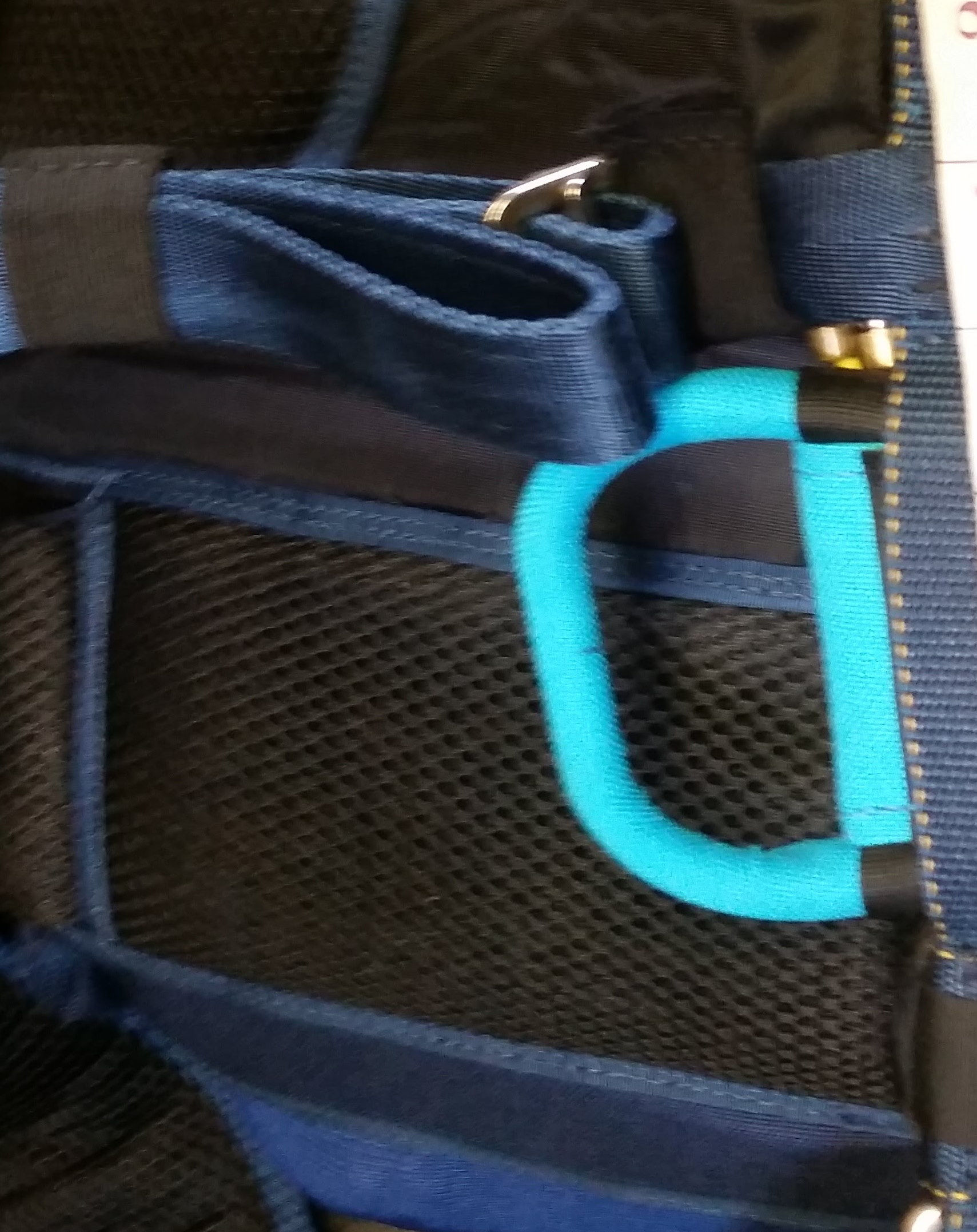 |
Loop handle |
Requires no grip to activate- likely to be useful to a jumper with a weakness in the hand or grip May be preferred by CF/CRW jumpers as less risk of lines catching than on a pad. |
Still some snag risk, although the soft, flexible material makes this less likely |
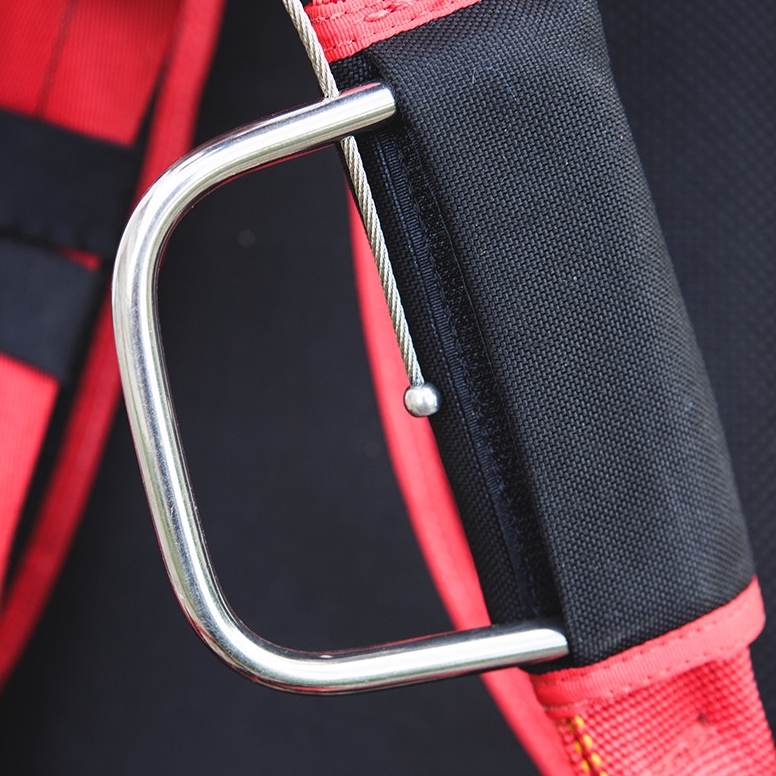 |
D-ring reserve handle |
Standard on most student kit Requires no grip to activate with thumb |
Potential hazard to catch and activate unintentionally (on the ground, in the plane, or in freefall) |
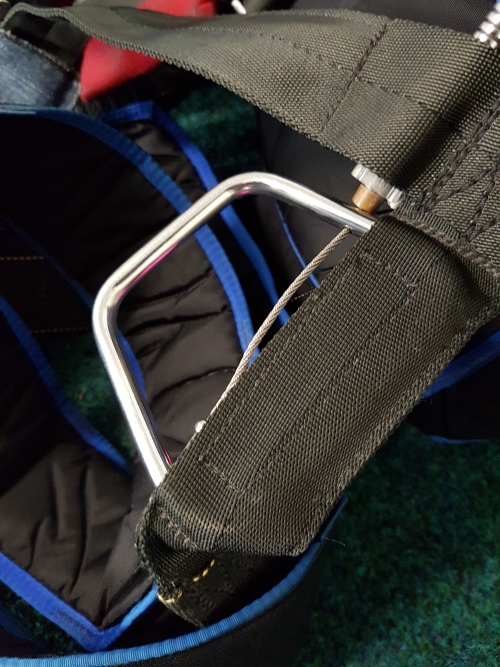 |
Mini D-ring reserve handle |
Less of a snag hazad than a large ring Can still be operated without grip |
Potentially more difficult to locate than a larger ring Still presents a possible snag |
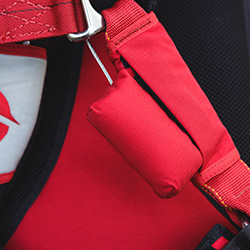 |
Soft pad reserve handle |
Less likely to be activated accidentally by objects such as cameras |
May require a change in reserve procedures (speak to your instructor!) Possibility of snagging lines in the event of a canopy wrap |
Main Handle Options
There are a number of options for the handle on the pilot chute which are generally a matter of personal preference. For throw away pilot chutes the following options are common.
Photo |
Option |
Advantages |
Disadvantages |
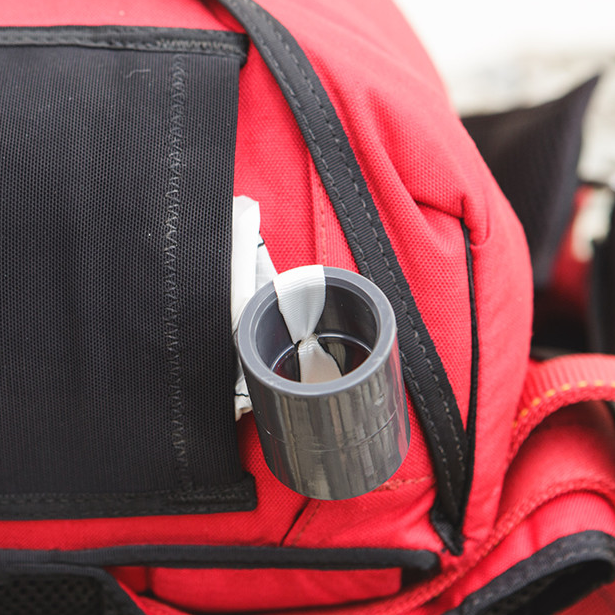 |
Pipe |
The hard material is easier to feel when deploying the canopy Cheap Easy to replace |
Aesthetics Potential to release prematurely in certain scenarios such as poor BOC (bottom of container) pocket maintenance, poor packing, high wind speeds e.g. sit fly |
 |
Hackey |
Ball may be easier to grab and throw |
Hackey moves on the attachment point, which creates more wear Potential to release prematurely in certain scenarios such as poor BOC (bottom of container) pocket maintenance, poor packing, high wind speeds e.g. sit fly |
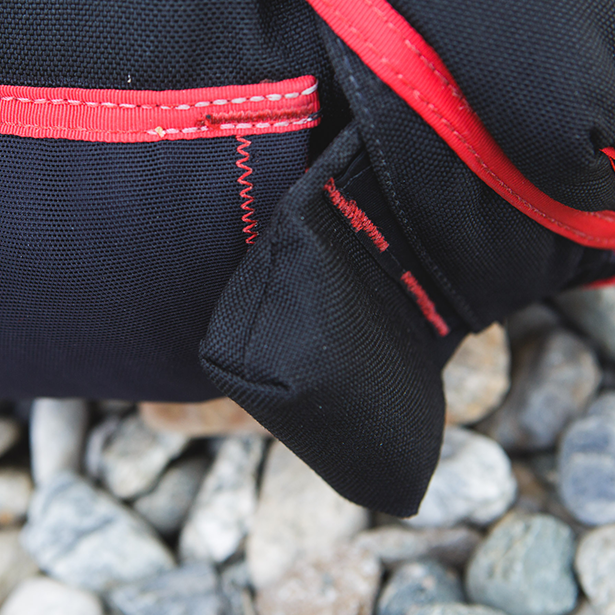 |
Freefly handle (pud) |
Tab tucks under a main flap or dedicated flap but can be packed without using the tab More secure- less likely to release prematurely. Often favoured by freeflyers who are subject to higher wind speeds |
Requires tab to be released during pull sequence Potentially harder to get hold of due to the shape sitting flush with container |
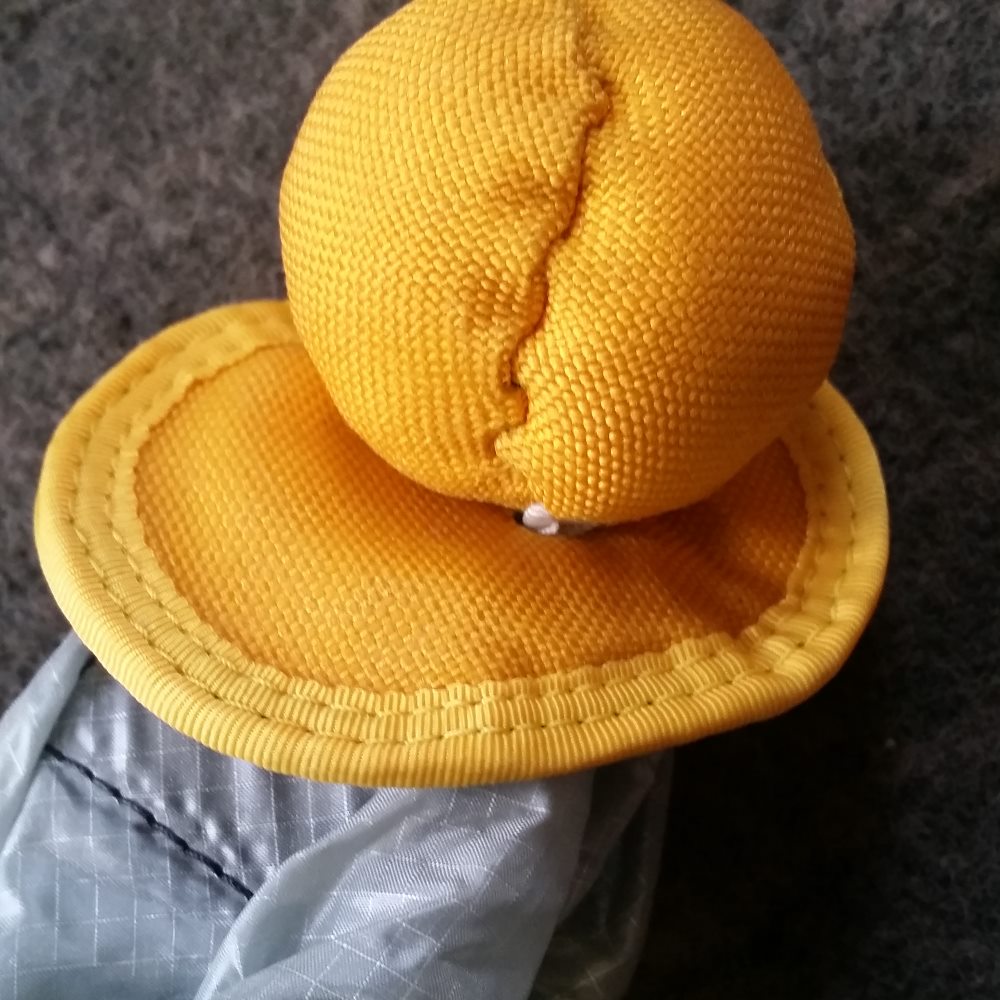 |
Freefly hackey |
Easy to grab but with a tab to tuck in |
Aesthetics Hackey moves on the attachment point, which creates more wear |
Other Deployment Systems
The following systems are alternatives to a throw away pilot chute mounted on the bottom of the container.
Photo |
Option |
Notes |
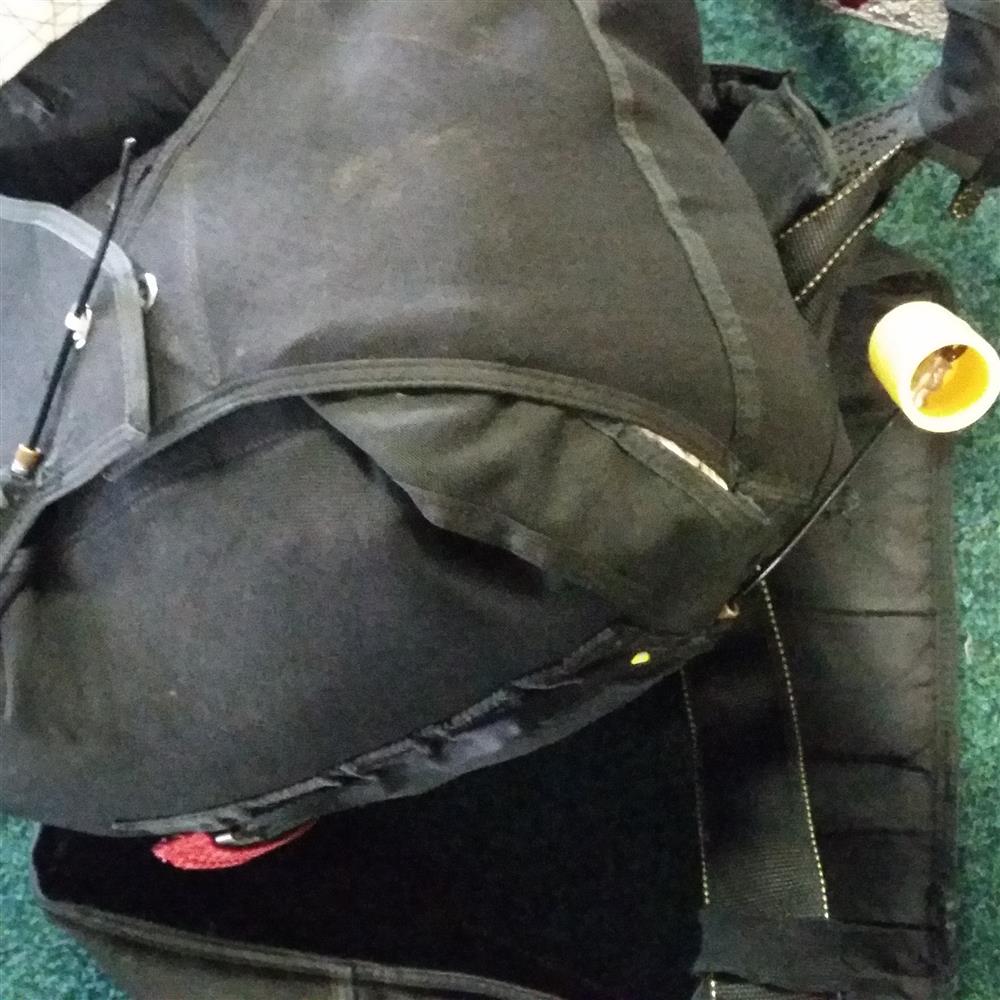 |
Ripcord |
Often used on student equipment, a spring loaded pilot chute is packed in with the main and is released by pulling a ripcord. This relies on the spring forcing the pilot chute out of the jumpers burble and into clean airflow and leaves the jumper holding a ripcord. |
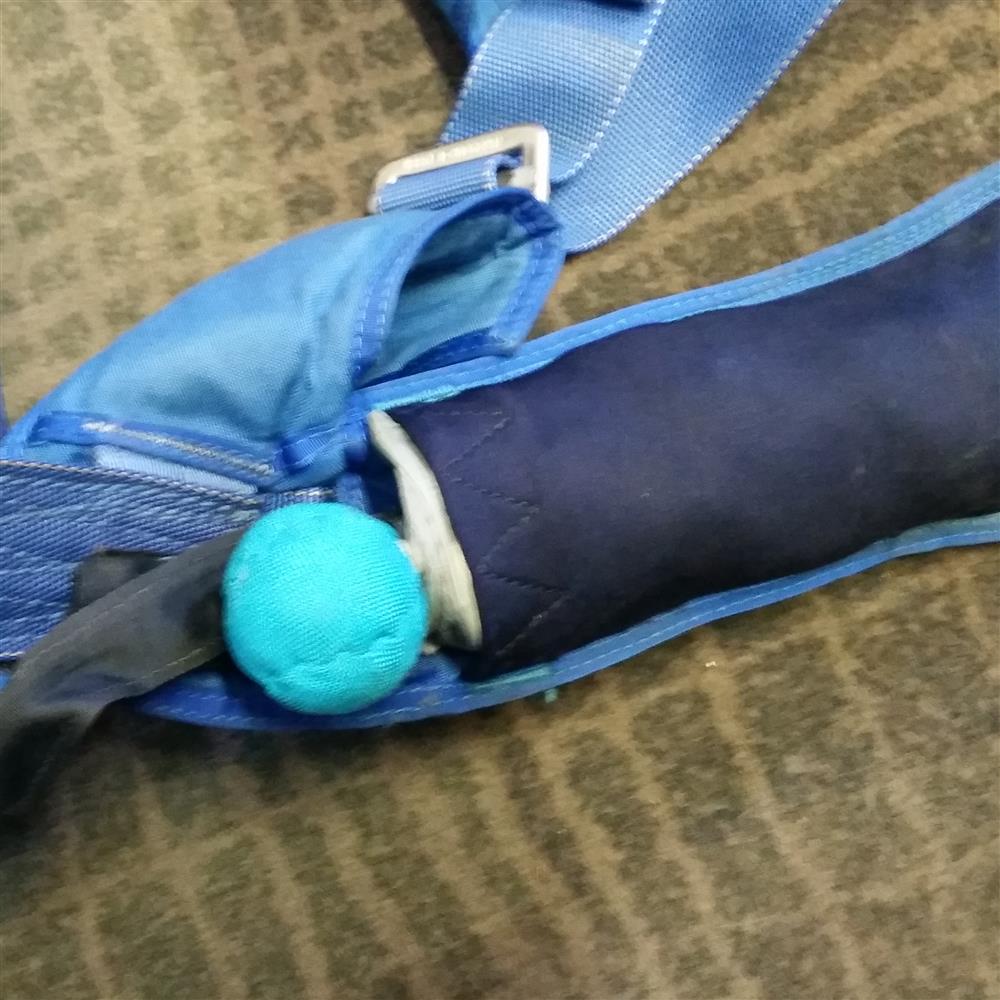 |
Leg mounted / belly mounted |
Either a throw away pilot chute or a ripcord can be mounted on the legstrap or belly band, although these options are no longer common on modern kit. |
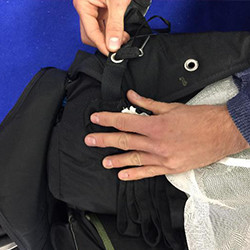 |
Pull out |
Designed to eliminate the possibility of a horseshoe malfunction, the pilot chute is packed in the main tray and the jumper physically pulls out the main pin (which is straight) from a handle to open the container and release the pilot chute. The BPA requires jumpers to have a C licence to jump a pull out system. |
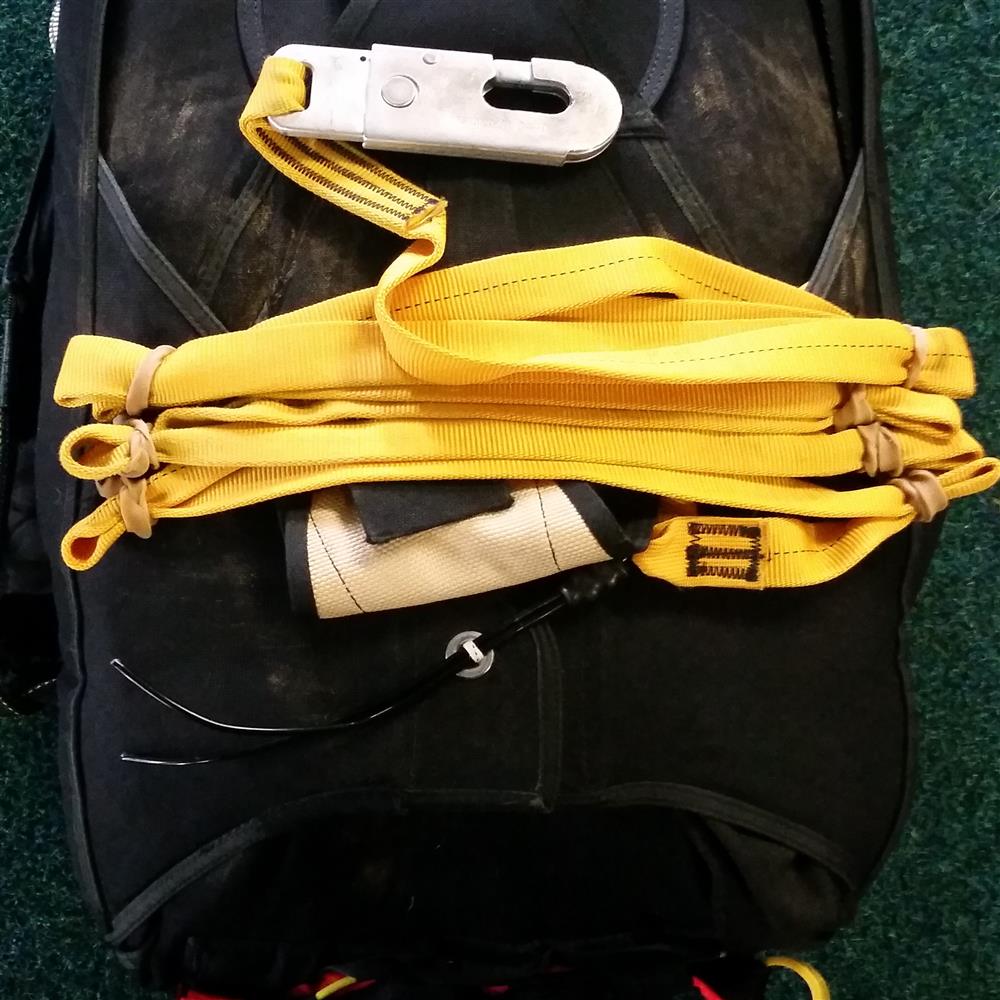 |
Static line |
Commonly still used for early training jumps in the UK through the Category System course; the main is deployed automatically by a static line connected to the aircraft as the jumper leaves. |
D-Bag, Pilot Chute and Bridle
Photo |
Option |
Advantages |
Disadvantages |
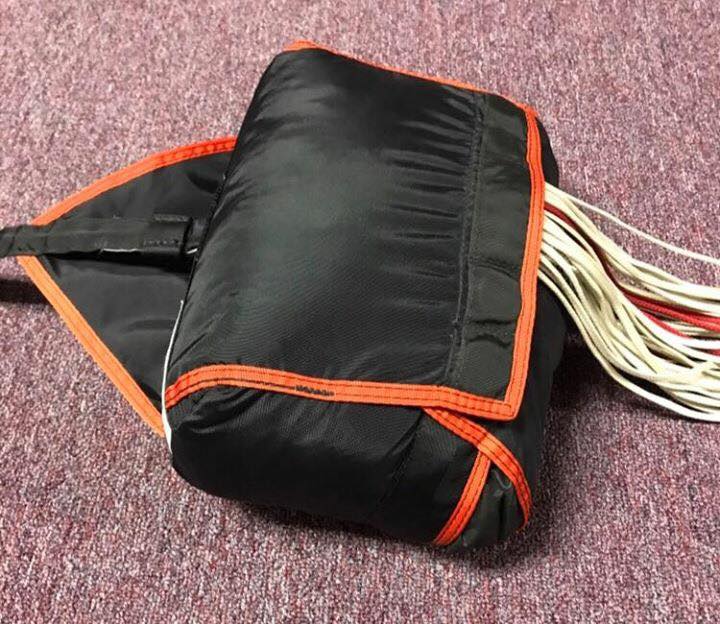 |
Stowless D-Bag |
Allows for a cleaner deployment of the lines No more bungees! |
Requires careful packing |
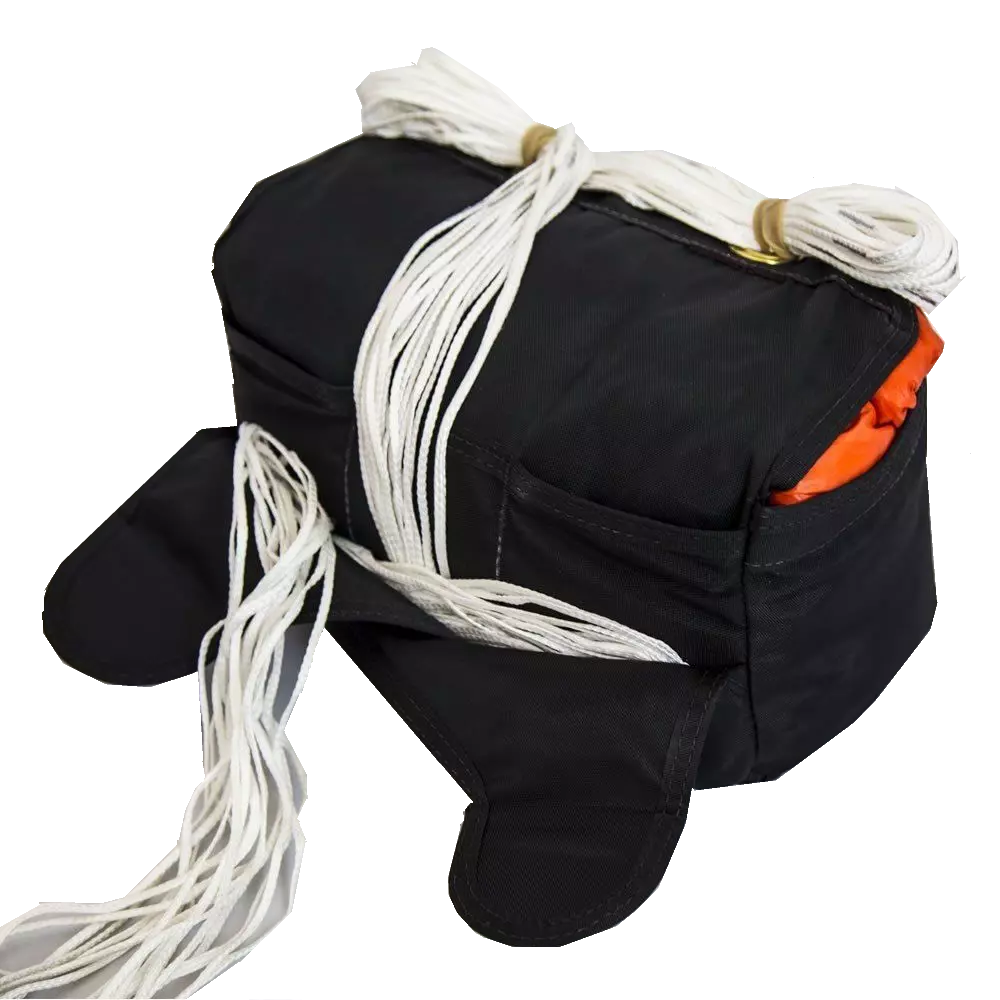 |
Semi-Stowless D-Bag |
Allows for a cleaner deployment of the lines but with the same security of bungees on the mouthlocks Fewer bungees to replace! |
Requires careful packing |
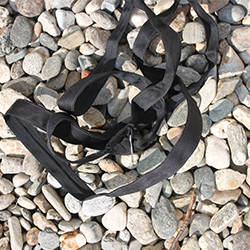 |
Long Bridle |
Allows the pilot chute to be further away from the jumper and burble during deployment. Favoured by wingsuiters or camera jumpers who are likely to have a larger burble. |
Takes slightly longer to pack More bulk when pilot chute is packed Possibly more difficult to cock (particularly for the shorter jumper!) |
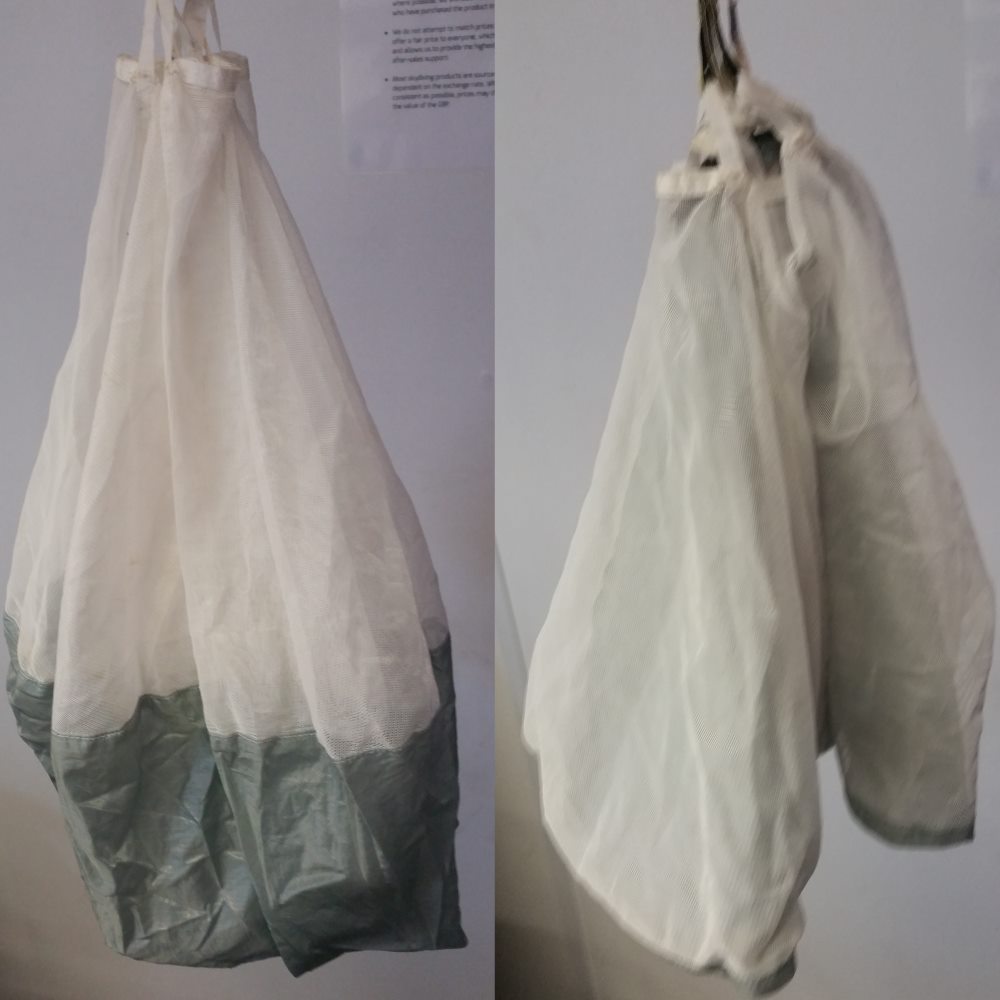 |
Collapsible Pilot Chute |
Reduces drag on the canopy during canopy flight. More important for smaller canopies. |
Possible hesitation during deployment or malfunction if not cocked during packing. |
Riser Options
Photo |
Option |
Advantages |
Disadvantages |
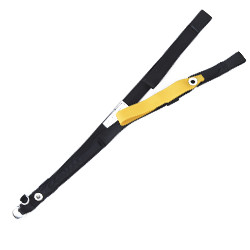 |
Type 17 Narrow risers |
Narrower risers reduce drag compared to Type 8 (wide) risers Narrower risers may allow the jumper to pull their slider down if set up correctly and desired A "swoop" or "low drag" options may also be available where the riser is folded in half and stitched to further reduce drag. |
Narrow risers usually come with mini 3 ring systems which are less effective at reducing the force than full size 3 rings. |
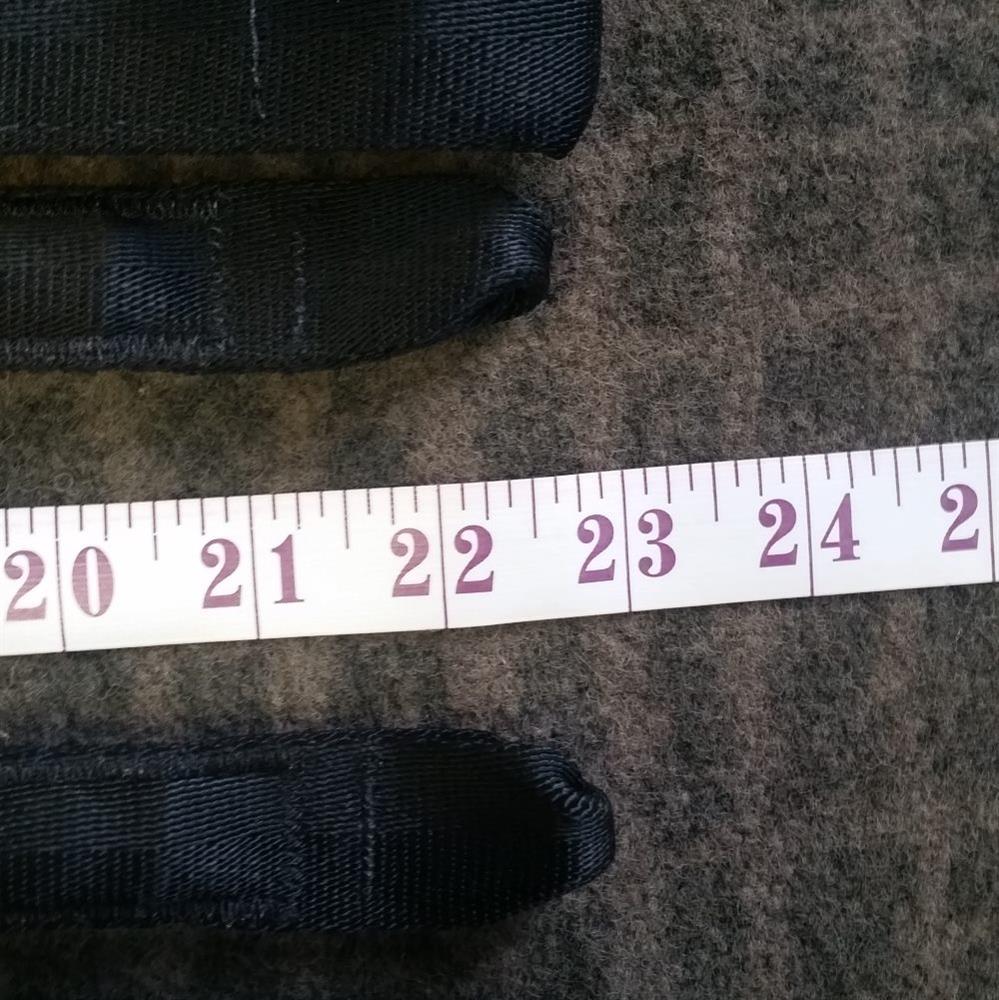 |
Length |
Each container will have a standard length riser which will be suitable for most jumpers Shorter jumpers may require shorter risers to allow them to reach their slider Longer risers may affect the handling characteristics and control inputs of the canopy for high performance canopy pilots |
|
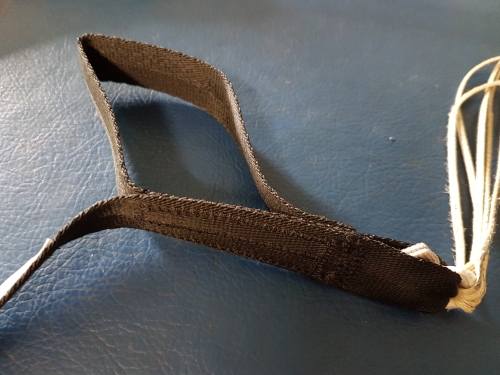 |
Dive Loops |
Larger dive loops are easier to grab hold of Teflon cables or other stiffeners will ensure the loops stay open during flight |
Larger dive loops may add bulk to the pack job at the sides of the container |
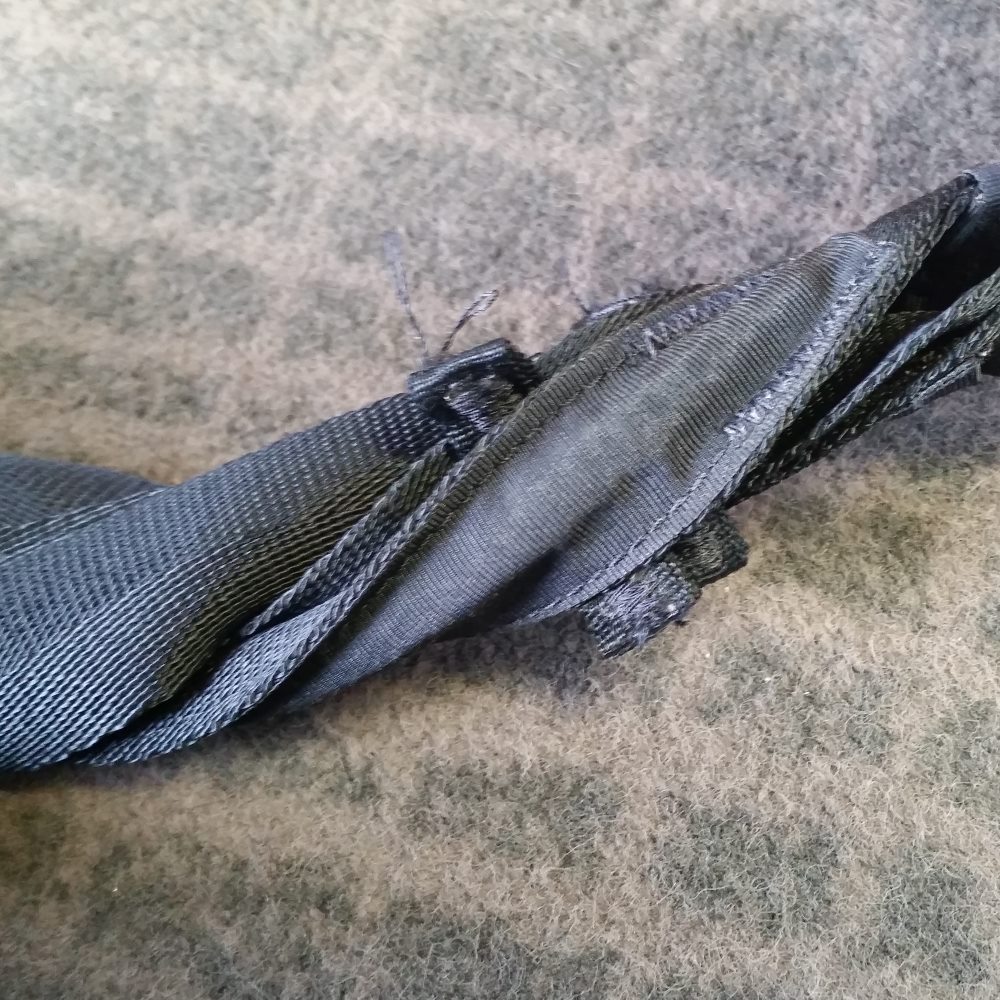 |
Anti-Twist |
Hard housings for the excess cutaway cable are designed to prevent the cables getting locked in place during excessive twists, which may otherwise prevent a cutaway. |
Additional bulk |
Note: Most risers with mini rings are interchangeable between container types; a notable exception is Icon risers, which have an elongated middle ring that means they aren't compatible with most other containers. Always check with an instructor or rigger when dealing with equipment you are unfamiliar with.
Dynamic Corners
Fewer or no stitches in the corners of the main tray allow the flaps to open up further, resulting in a cleaner extraction of the main canopy, but generally requiring more care when packing.
Photo |
Option |
Advantages |
Disadvantages |
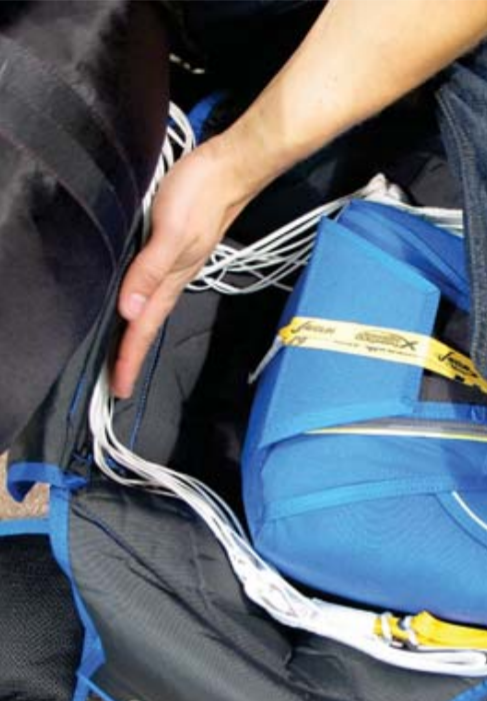 |
Regular corners |
Easy to pack |
Corners of the container may result in the d-bag turning on deployment (more likely on wingsuit jumps) |
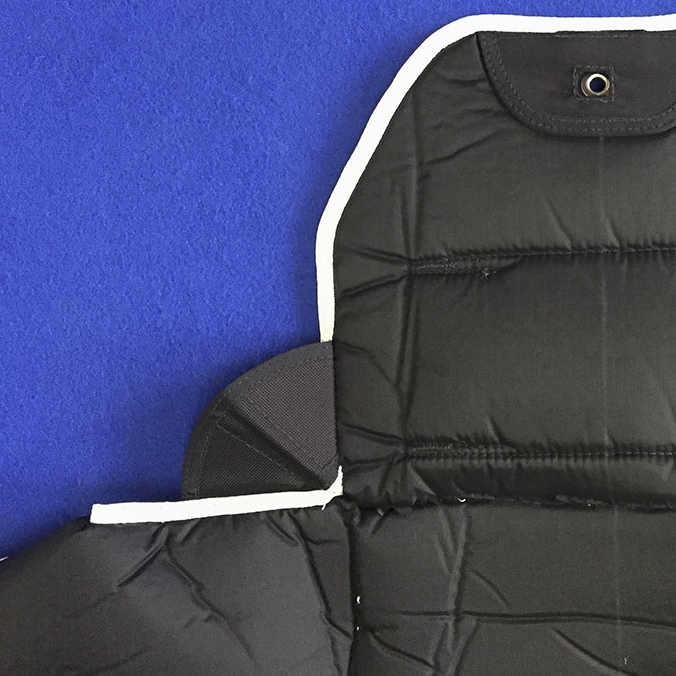 |
Dynamic corners |
Allows the tray to open up fully on deployment, reducing interference with the bag leaving the container. This is particularly useful with the different deployment angle on wingsuit jumps and prevents rocking of the d-bag. |
More careful packing required May look less aesthetically pleasing |
Other Options
Photo |
Option |
Advantages |
Disadvantages |
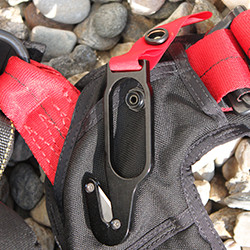 |
Hook Knife |
Less likely to lose than on a chest strap Spare if you also carry one on your chest strap Can usually be mounted on the legstrap or MLW (Main Lift Web) cover BPA requires all jumpers A licence or above to carry at least 1 servicable hook knife |
Cost
|
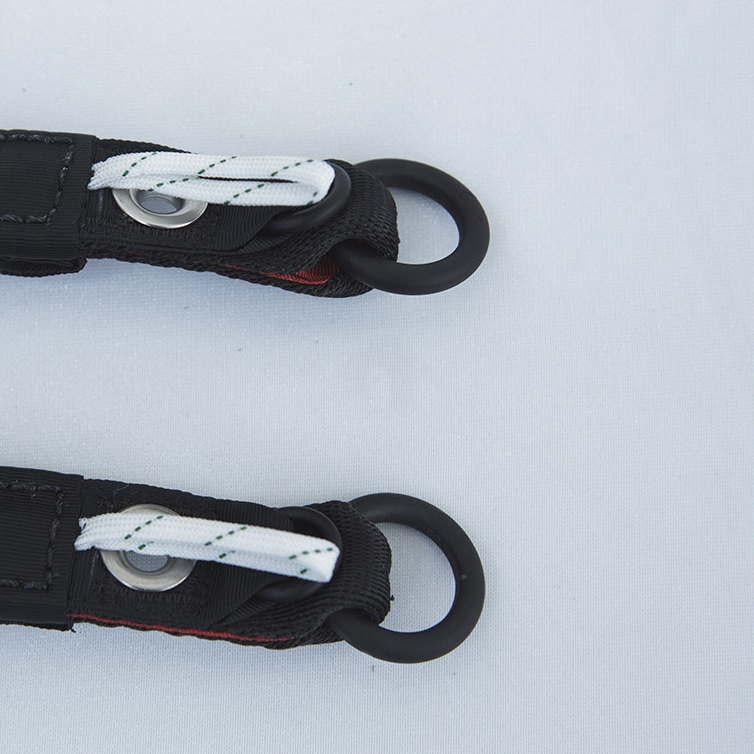 |
Black Hardware |
Aesthetics |
Cost May wear differently to stainless steel hardware |
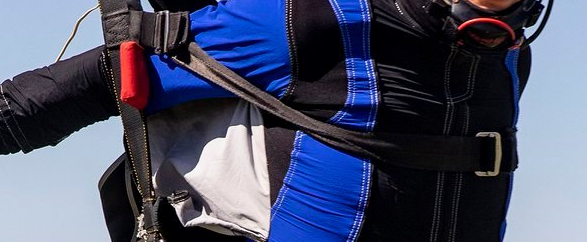 |
Long Chest Strap |
If you loosen your chest strap under canopy a longer chest strap allows for more freedom of movement in the harness. Speak to an instructor if you are considering doing this. |
More cumbersome to stow |
 |
Embroidery |
Aesthetics Allows you to personalise your rig. Often used by self-employed skydivers to advertise their companies. |
Cost Affects the resale value of the container |
Certifications
Certification |
Notes |
Containers |
| TSO (Technical Standards Order) |
The most widely recognised testing standard administered by the US FAA (Federal Aviation Authority). There are several revisions of the standard as it has been updated over time. |
Javelin, Vortex, Wings, Vector, Atom, Icon, Mirage, Infinity, Teardrop |
| National Authority Type Certification |
Only US citizens can apply for a TSO so there are a number of containers on the market from Europe that do not have a TSO but are tested using the same system. These are sometimes granted national certifications; however, not all nations operate such a system. |
Sife, Fire |
| No certification |
Where national certifications do not exist, a container may not have any certification. It is unusual to find mainstream containers that fall into this category. |
No mainstream containers |
Final Note
There are constantly new changes and innovations in skydiving equipment and we are forever learning about new advantages and disadvantages to various designs. If you notice anything that is wrong or could be updated, we would love to hear from you (we might even send you a litle something as thanks) and, as always, please refer to your instructors for advice.

 AADs
AADs
 Containers
Containers
 Canopies
Canopies
 Used Rigs
Used Rigs
 Used Rig Components
Used Rig Components
 Full Face Helmets
Full Face Helmets
 Open Face Helmets
Open Face Helmets
 Helmet Spares
Helmet Spares
 Helmet Accessories
Helmet Accessories
 Visual Altimeters
Visual Altimeters
 Audible Altimeters
Audible Altimeters
 Altimeter Mounts
Altimeter Mounts
 Altimeter Spares
Altimeter Spares
 Packing
Packing
 Gloves & Goggles
Gloves & Goggles
 Knives
Knives
 Logbooks
Logbooks
 Bags & Cases
Bags & Cases
 Camera
Camera
 Rigging Tools
Rigging Tools
 Rigging Materials
Rigging Materials
 Black Friday Rig Deals
Black Friday Rig Deals
 End of Season 2025 Clearance
End of Season 2025 Clearance
 Used Gear
Used Gear
 Clearance Stock
Clearance Stock
 Gift Ideas
Gift Ideas
 Rentals
Rentals
 Rigs
Rigs
 AAD Spares
AAD Spares
 Container Spares
Container Spares
 D-Bags & Freebags
D-Bags & Freebags
 Main & Reserve Pilot Chutes
Main & Reserve Pilot Chutes
 Lanyards
Lanyards
 Risers & Toggles
Risers & Toggles
 Cutaway & Reserve Handles
Cutaway & Reserve Handles
 Bungees & Elastics
Bungees & Elastics
 Loops & Links
Loops & Links
 Container Accessories
Container Accessories
 Main Canopies
Main Canopies
 Reserve Canopies
Reserve Canopies
 Linesets
Linesets
 Canopy Spares
Canopy Spares
 Canopy Accessories
Canopy Accessories
 Jumpsuits
Jumpsuits
 Formation (FS)
Formation (FS)
 Freefly (FF)
Freefly (FF)
 Swoop Shorts
Swoop Shorts
 Working
Working
 Camera
Camera
 Tunnel
Tunnel
 Helmets
Helmets
 Altimeters
Altimeters
 Accessories
Accessories
 Clothing
Clothing
 Rigging
Rigging
 Line & Cable
Line & Cable
 Tapes
Tapes
 Webbing
Webbing
 Hardware
Hardware
 Threads
Threads
 Fabrics & Netting
Fabrics & Netting
 Elastic & Velcro
Elastic & Velcro
 Sale
Sale
 Services
Services
 Winter Jumping
Winter Jumping
 DZ / Sub Dealer
DZ / Sub Dealer